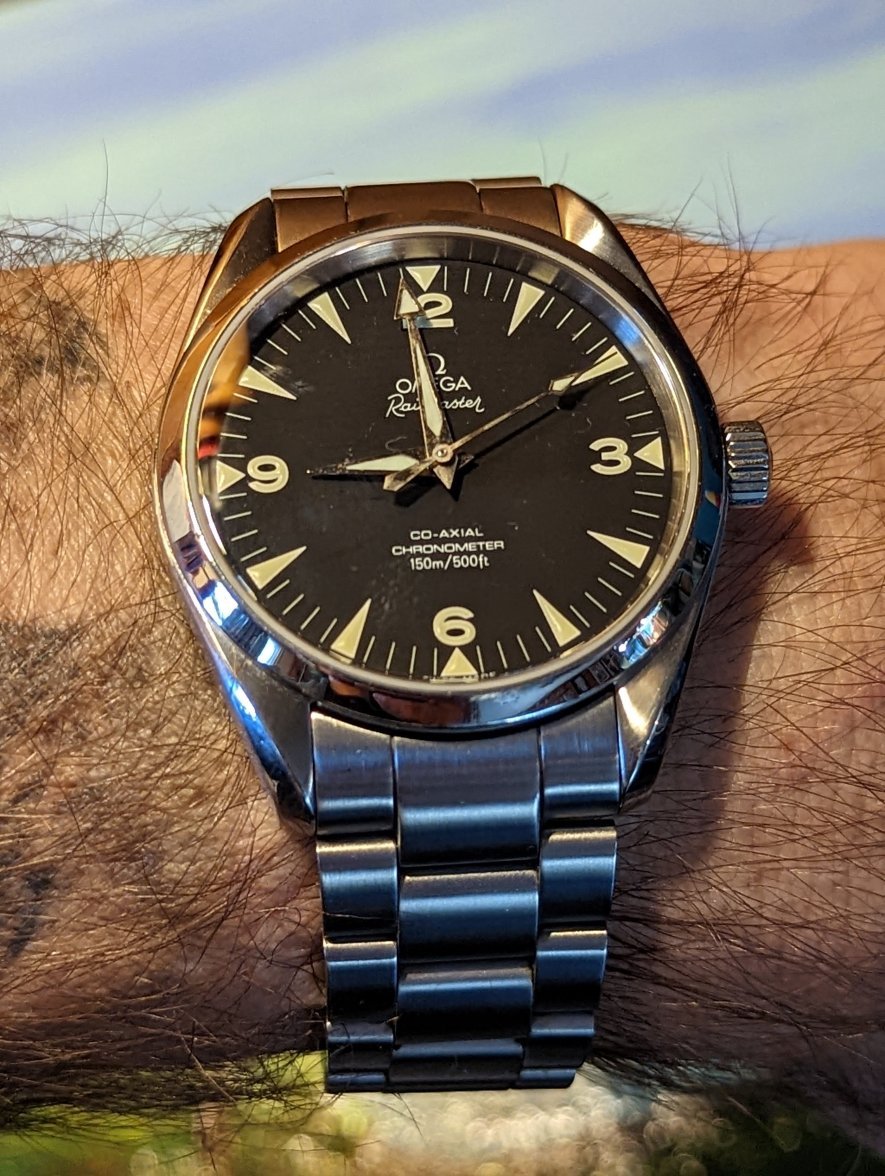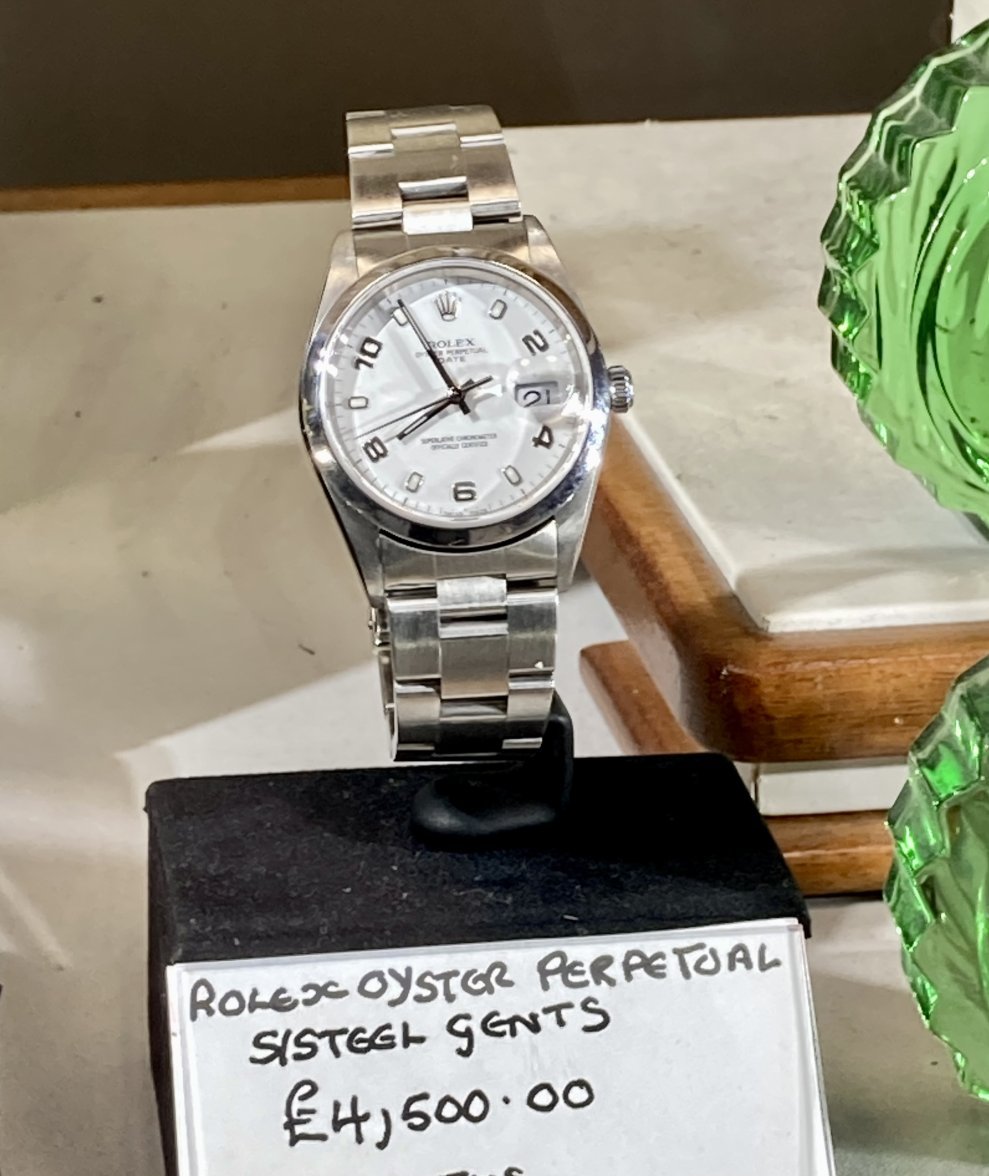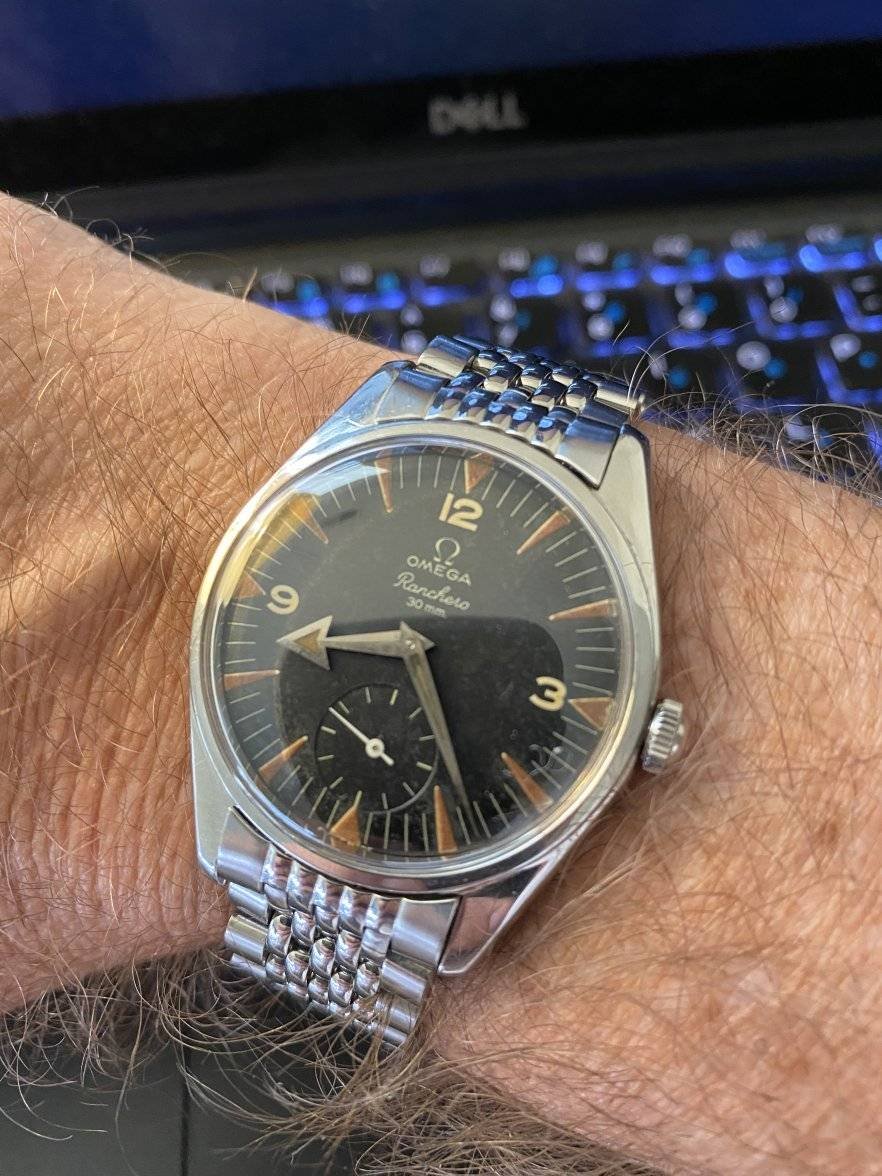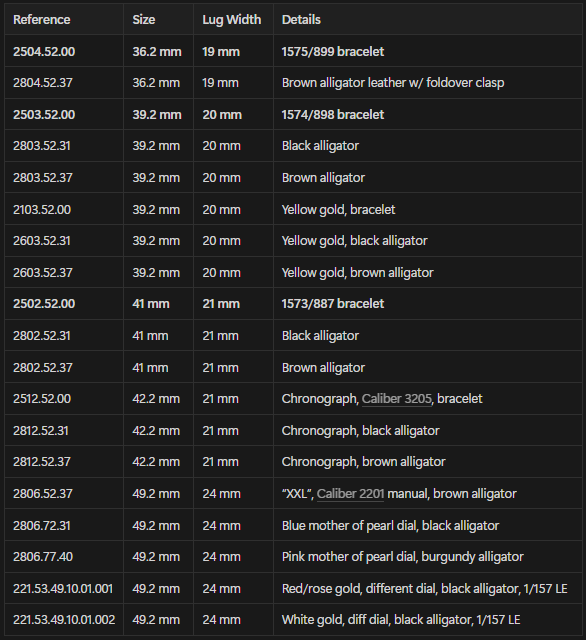Good article. I've been a fan of this watch since I first became interested in Omega in the late 00's, quite a number of years before I could afford one. I was fortunate enough to finally pick the 36.2 mm up earlier this year when the first one I've seen come up for sale in Australia surfaced. They truly are rare in that size, but IMO it is the best proportioned reference and wears bigger because it's all dial.
Of note, the 36.2 mm reference was introduced in 2007, four years after the other sizes. This is why it is only available with the lower beat rate 2403B (2500C) movement, and also it wasn't ever available on black leather - only brown leather strap references were still available by then. The 36.2 mm reference disappears by the 2009 catalogue, and all Railmasters disappear by the 2010 catalogue. This is odd because there is a lot of talk online that the Railmaster line wasn't discontinued until 2012, but either way the 36.2 mm wasn't around long and would have sold very poorly as this was during the rise of the big watch trend. Understandable, then, why it's such a rare reference.
Not a huuuge fan of the couple of references in the article to it being "painfully inferior" and having a "slightly worse dial" than the Aqua Terra. I would argue the Railmaster is a pared down, minimalist tool watch variant of the dressier Aqua Terra - and frankly has a way superior symmetrical dial. It's almost a field watch, and definitely a "GADA" watch. The only technical feature it lacks is a date, but you gain far superior legibility in return. Of course, both sides of that debate are just subjective opinion and the AT certainly sold more.
Speaking of subjective, in my opinion this second generation Railmaster is sorely underrated, and is one of Omega's best models. The name implies it should compete with the Milgauss, but really this one competed with the Explorer - though I don't think that was well marketed or appreciated at the time. Over time it has come to be appreciated more as kind of a cult classic, and the second hand market reflects that. Especially for the 36.2 mm, which has done well out of the recent return to popularity of classically sized models, and apt comparisons with the traditionally 36 mm Explorer - which itself since returned to 36 after a stint at 39 around the time of the Railmaster, further demonstrating 36's were out of style at the time.
I've had search alerts across Chrono24, eBay and watch forums for the 36.2 mm reference since about a year prior to purchase, but also filled in all of the listings I could find from prior forum threads. As of this comment, that looks like this, noting the vertical axis has been converted to AUD. Obviously this reflects ask price not final sale price, but often it sells within 24 hours and almost always in less than a week of listing. All three Chrono24 listings in the past year disappeared within 12 hours.
Finally, there were
a lot of Railmasters in the second generation's run. Here is all the references I could find:







